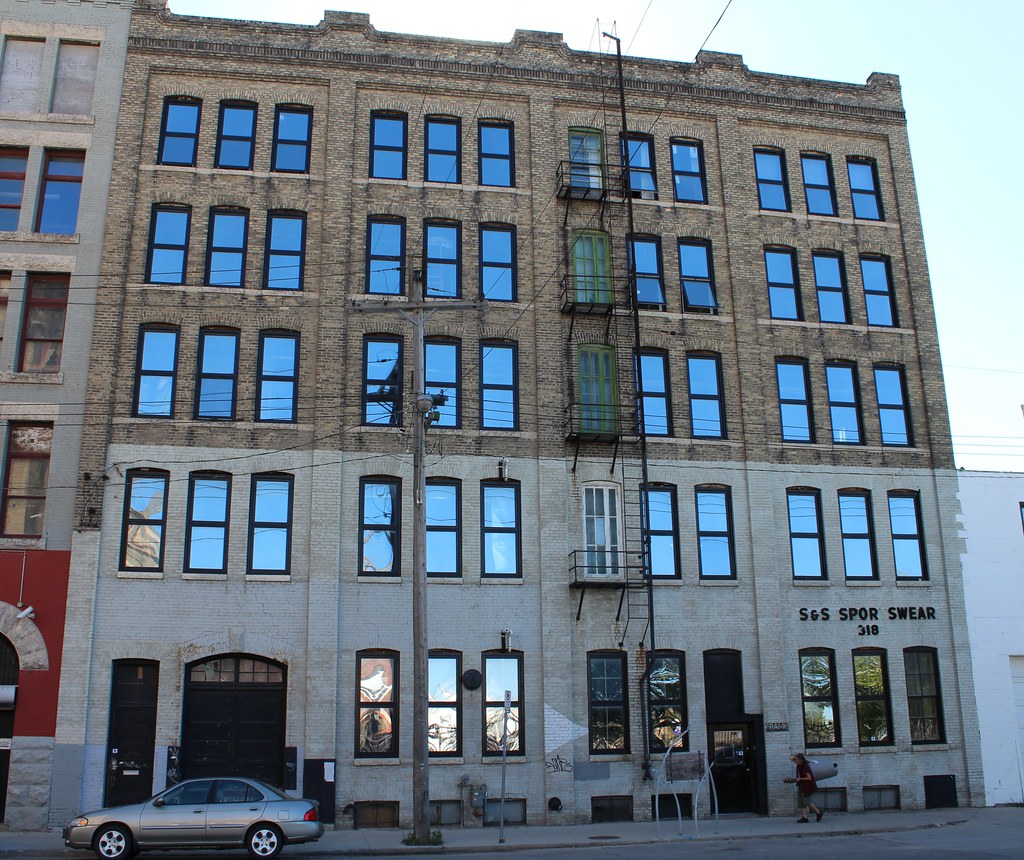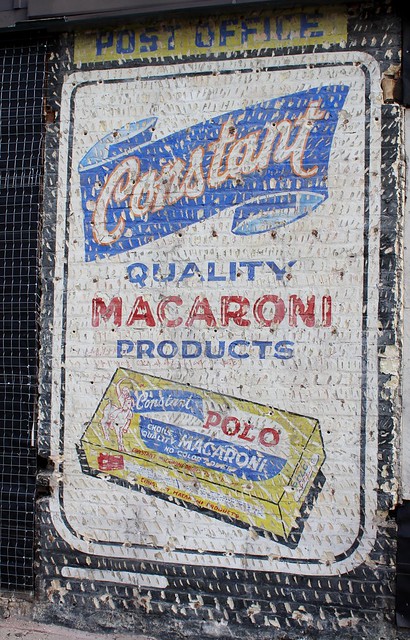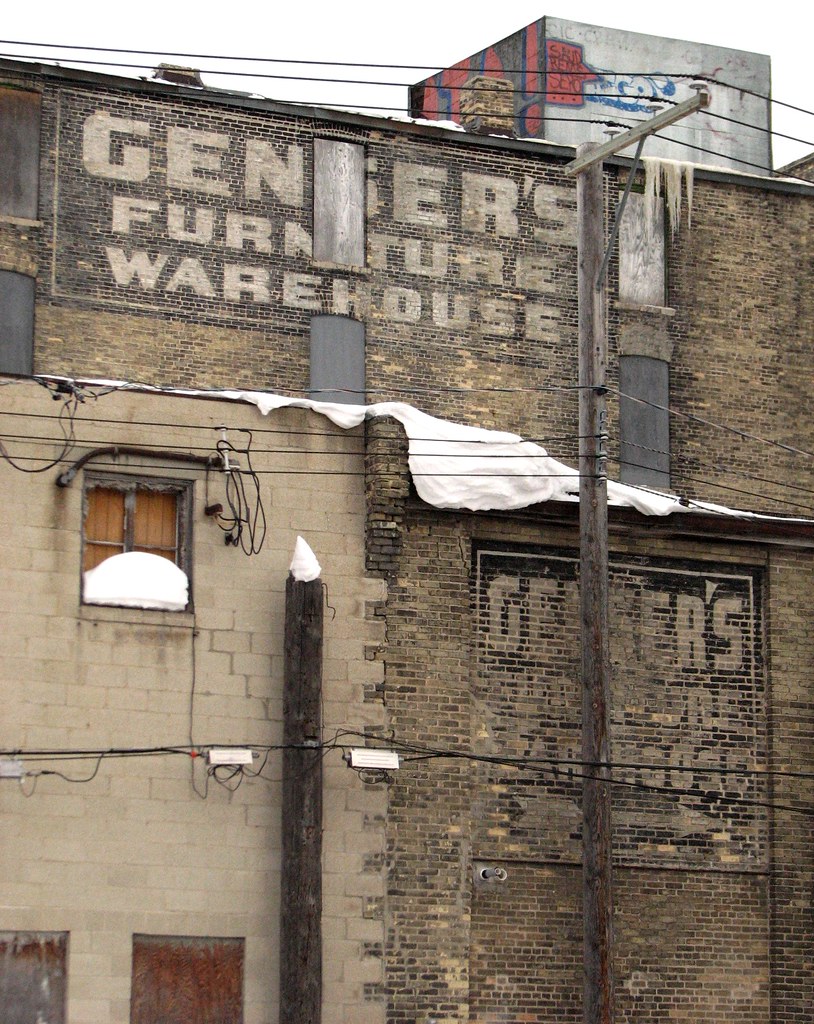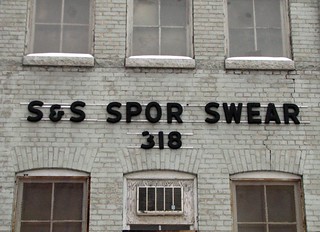Address: 316 - 318 Ross Avenue (Map)
Constructed: 1905 - 06
Architect: A and W Melville
Contractor: P. Burnett
Cost: $22,000
November 14, 1891, Winnipeg Tribune
Edward Boyce grew up in Kingston, Ontario, apprenticed as a carriage maker and after a few years in Toronto came to Winnipeg in 1878 at the age of 23. He worked for one of the only carriage makers in town before striking out on his own in 1880 with Boyce’s Carriage Works on James Street.
His firm manufactured a wide variety of buggies, wagons and buckboards and sleighs that were sold across the West. The company soon found niche in delivery wagons, ambulances and hotel buses.
The business was a success and he soon moved to larger premises at 325 Elgin Avenue. He continued to swallow up neighbouring properties on Ross Avenue and in 1904 decided to consolidate his operations.
August 5, 1905, Winnipeg Free Press
Boyce hired architects A and W Melville to design a new five-storey stone and brick building at 316 Ross Avenue. The Melvilles were well known local architects, most noted for their Winnipeg fire hall designs that were being built around the same time.
The tender for a contractor was first advertized in March 1904, but for whatever reason construction did not go ahead. It was advertized again the following summer and and P. Burnett was hired. In early August foundation work started and in September the Melvilles took out a $22,000 building permit.
September 25, 1915, Winnipeg Tribune
The building was constructed in two stages. The first 75 feet wide by 50 feet deep section was completed by the end of the year, while the second, similar sized section began construction in early 1906. It was connected at the rear to the 325 Elgin Avenue building which became their showroom. Once completed, Boyce had more than 45,000 square feet of space in which to operate.
The main floor was the blacksmiths shop. Each upper storey contained a number of electric hoists and trap doors to allow for their product to be moved throughout the complex.
For a decade at this location Boyce was riding high. Sales were good and he employed about 60 people at the company's peak.
Boyce was a major player in the local manufacturing industry and was a member of the Board of Trade and supporter of the Winnipeg Industrial Exhibitions. He also appears to have been a private man. He rarely made the newspapers, finding a photo of him proved impossible, and appears never to have run for public office.
What is known of his personal life is that his first wife, Eliza Taylor of Ottawa with whom he had two sons, Wilfred and Norman, died in 1900. He remarried Ada Wilkinson in 1902.
February 1, 1915, Winnipeg Tribune
As automobiles became more popular, though, the company's fortunes began to wane. Though there was still a market for carts and wagons, especially in the delivery business, they were surely facing stiff competition from national and international automobile manufacturers that could sell you a truck, bus or ambulance version of their products “off the shelf”.Boyce's business activities shifted to face some of these new realities. They got into the construction of custom truck bodies and did auto body repair, painting and detailing. The company made a last ditch effort to stay relevant in the automobile age when in February 1918 they unveiled a vehicle that they had built from scratch, with the exception of the engine. It did not attract investors or sales and in February 1919 the company ceased operations, (it is unclear whether it was closed, foreclosed upon or went bankrupt). The assets were auctioned off over the summer.
Edward Boyce, who first became ill in 1916, had been getting progressively worse. He spent more and more time in California, hoping that the warm, dry weather would improve his health. It didn't.
Shortly after the company closed, on May 24 1919, Boyce died at the Ross Avenue home of one of his sons.
The building then sat vacant until 1926, perhaps due to some sort of estate dispute. In 1927 the Paulin’s Company / McCormick Biscuits, which had a biscuit factory across the street, took it over as warehouse space. The following year it had a close call when a blaze broke out causing $60,000 in damage. The building survived, but tons of cookies did not.
In the 1930s the building was subdivided. The upper floors may have remained a warehouse but the second floor became a manufacturing space. In the early 1930s it was home to Jourard Furniture, a maker of upholstered chairs and chesterfields that also operated a factory retail outlet. From the mid-1930s to 1943 it was a production facility for the Constant Macaroni Company.
In 1945 the entire building became the warehouse to a one-time Winnipeg retail institution called Gender's Furniture, the name is still painted on the south side of the building.
Moe Genser was a leading Winnipeg musician from the 1890s to 1930s. He played the violin and clarinet in a number of orchestras, eventually becoming the house conductor of the Walker Theatre Orchestra, a position he held for 30 years. Genser was chosen to organize and conduct the 60-piece orchestra that played at the opening of the Manitoba Legislature in 1921. He is also credited as one of the key drivers in the creation of the Winnipeg Symphony Orchestra.
Genser was also an astute businessman. In 1926 he opened a sheet music store on Portage Avenue near Fort Street. Soon after, he added both a furniture and an appliance store to his portfolio. In 1931 he combined them together in a single, 28,000 square foot store on Portage Avenue called Genser and Sons.
In the mid 1940s Genser wanted to serve the incoming wave of wartime immigrants and refugees and opened a number of satellite stores, especially in the North End. He purchased 316 - 318 Ross Avenue to be the chain's warehouse and repair shop.
In 1959 Genser opened a 30,000 square foot store in the new Polo Park Shopping Centre and their downtown store absorbed the buildings on each side of it. In 1961 Moe Genser died but is sons took over the business. They were about to embark on an ambitious suburban expansion when, in 1972, the company went into receivership.
The building was then subdivided again into 316 and 318 and was home to a number of manufacturers. Clothing manufacturer S and S Sportswear took up the 318 portion from the 1980s to 2000s, operating a retail store on the main floor with warehouse and manufacturing space on the upper four levels.
Source: Syverson Monteyne Architecture
In 2014 architect Syverson Monteyne approached the city with plans to consolidate the existing building and loading dock / parking area plus a neighbouring empty lot into one lot for the creation a new mixed-use addition. A service agreement was reached with the city in July 2014.
The building was not zoned for residential use and in August 2015 the city had it closed for "considerable building, electrical, mechanical and plumbing alterations and construction performed without required permits."
Related:
My Flickr Album of 316-318 Ross











No comments:
Post a Comment